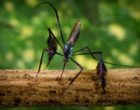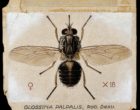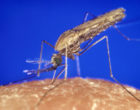
Schistosomiasis vector snails on the move!
Modelling suggests that Bulinus truncatus, one of the main intermediate host snails of urogenital schistosomiasis, can expand into new areas as… Read more »

Modelling suggests that Bulinus truncatus, one of the main intermediate host snails of urogenital schistosomiasis, can expand into new areas as… Read more »

Researchers use socioeconomic and ecosystem degradation variables to improve the predictive accuracy of disease risk models for NTDs in Brazil.

‘Beautiful' is an adjective seldom found in vector-borne disease, not least concerning mosquitos. Yet one photographer has… Read more »

In a recent study, researchers evaluate the cost of using ‘Tiny Target’ tsetse control in Cote D’Ivoire and demonstrate how… Read more »

Heartworm infection is already prevalent in wolves that have recolonized the known heartworm-endemic area in Northern Italy.

For a bit of fun we have put together a small cryptic crossword puzzle where the answers relate to parasite and vectors. Hope you… Read more »

A new study investigates the effectiveness of mass drug administration to reduce prevalence of mites that cause scabies and their… Read more »

The topic of this blog coincides nicely with Charles Darwin’s birthday week. The techniques that we use to study evolution… Read more »

In 2017 BugBitten reported on the latest research and events concerning the parasitology and vector biology community. As the year… Read more »

BugBitten celebrates its 3rd birthday this month, so lets look back at some of our memorable blogs and the people behind these… Read more »